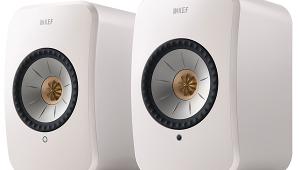A new product scares the crap out of me. This is one. I don't know so far if the story is true, but there was a recent news item about a smart speaker sending conversations from one person's home to a friend of his. It was apparently an issue of permissions and a bug or two, but yes, this is permitting a large, impersonal company to bug your home.
I'll stay a luddite on this for a while.
 From the app, you’ll be able to name the speaker and set defaults, such as your loca-
tion and music provider, as well as link compatible devices like smart lights and thermostats. (The HomePod not withstanding, which only works with Apple’s own Apple Music service for voice control.)
From the app, you’ll be able to name the speaker and set defaults, such as your loca-
tion and music provider, as well as link compatible devices like smart lights and thermostats. (The HomePod not withstanding, which only works with Apple’s own Apple Music service for voice control.)

































































